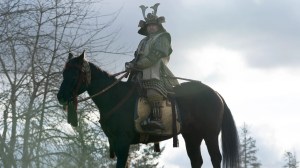The Marvel Cinematic Universe is known, among many other things, for its inclusion of mid and post-credits scenes. Every film in the MCU, save for Avengers: Endgame, includes at least one credits tag that either sets up what’s to come in the franchise, or just makes fans laugh before they leave theater. Sometimes they accomplish both. The idea of a post-credits scene has been around quite a while, with 1986’s Ferris Bueller’s Day Off providing one of the most memorable in the pre-franchise era. However, the MCU is where many believe the phenomena really took off. Well, I’m here to tell you that the post-credits scene may be a staple of Marvel films, but Disney’s Pirates of Caribbean franchise perfected it before the MCU even existed.
Videos by ComicBook.com
All five Pirates of the Caribbean films have a post-credits scene, but we’re just going to focus on the first three. These are undoubtedly the best of the series, not to mention they all arrived before Iron Man launched the MCU in 2008. Over the course of three scenes, the Pirates franchise used the credits stingers to set up important plot points ahead, make audiences giggle, and set up a future direction for the films beyond the initial trilogy. These scenes laid the groundwork for everything Marvel would eventually accomplish with its own collection of stingers.
Pirates of the Caribbean: The Curse of the Black Pearl hit theaters in 2003 and instantly became one of the seminal blockbusters of our time. A behemoth box office franchise was born with the arrival of this film and it remains the crown jewel of the series to-date. It also contained a layered post-credits scene that didn’t pay off for fans until the very end of the second film, Pirates of the Caribbean: Dead Man’s Chest, a move that was absolutely years ahead of its time.
At the end of Black Pearl, Jack Sparrow seemingly killed Barbosa in the cave, ending the conflict with his former comrade. However, audience members that stuck around through the credits (which was not a customary practice in 2003) got the chance to see the seeds planted for Barbosa’s return in Dead Man’s Chest. The scene showed the cave, filled with the bodies of dead pirates. Jack the monkey came out of hiding and scurried up to the chest of haunted gold pieces, removing one and, in turn, again enacting the curse that plagued Barbosa and his men for so long. The monkey then appeared in the moonlight and showed that the curse was back, opening the door for anyone else in that cave to potentially return to life, either by the curse itself or Jack finding help.

Dead Man’s Chest also had a post-credits scene, but it was way less important to the Pirates franchise as a whole. It simply returned fans to the island where Jack Sparrow was marooned, worshipped, and eventually chased out during the film. This scene shows the dog getting hunted by a horde of island natives, just as Jack had been earlier. It’s nothing too special and ultimately forgettable, like many other post-credits scenes over the years. The stinger for the following film, however, was the best of the franchise, setting up a future to Pirates after the film itself seemed to end the story.
Pirates of the Caribbean: At World’s End concluded the initial trilogy, and wrapped up the story of Will Turner and Elizabeth Swann. Or so we thought. The film concluded with Will giving his physical heart to the Elizabeth and taking over as the captain of the Flying Dutchman, cursed to live on the sea, transporting lost souls to their final resting place and only able to visit land every 10 years. The couple married, consummated said marriage, and then went their separate ways. It was a sad ending, but it brought the war to a halt. Then comes the post-credits scene.
The scene takes place 10 years later and shows Elizabeth waiting for Will to return for the first time, where he will only get one chance to be with her. The twist here is that she has a little boy with her. She conceived a child with Will and she brought the young boy to meet his father as he returned to shore. This one scene showed that Will and Elizabeth’s story was far from over, a point that came to fruition in Pirates of the Caribbean: Dead Men Tell No Tales an entire decade later.

Pirates of the Caribbean introduced ideas after the credits that wouldn’t pay off until years after they made their theatrical debuts, showing just how ahead of the curve Gore Verbinski and his creative team really were. The series got an extra 10 years of storytelling, just by simply tacking a scene on to the end of Pirates 3. It was an incredibly forward-thinking set of ideas, one that was adopted by the most popular film franchise in movie history just one year later.
Marvel has certainly had some great post-credits scenes over the years, but they owe a lot of that success to Pirates for training audiences to prepare for extras in the theater, and being willing to stay patient for maximum payoff.








